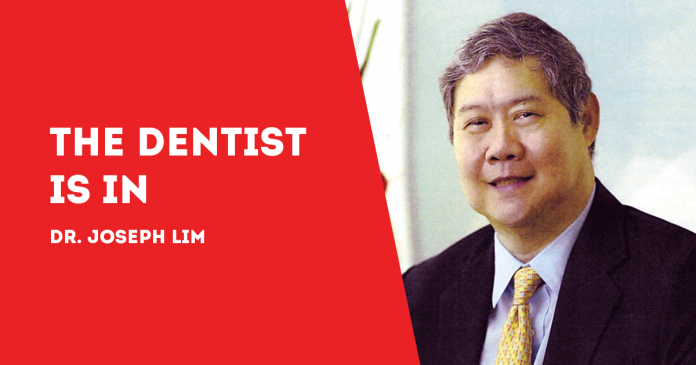
(By Dr. Joseph D. Lim and Dr. Kenneth Lester Lim, BS-MMG, DDM, MSc-OI)
THERE ARE two conditions that affect primarily the face: noma and cleft lip and palate.
Noma is nothing to laugh about. If left untreated, noma is deadly in most or 90 percent of cases.
If and when detected at an early stage, noma can be rapidly halted through basic hygiene, antibiotics and improved nutrition.
It is a severe gangrenous disease of the mouth and the face that affects mostly affects children aged 2-6 years suffering from malnutrition, affected by infectious disease, living in extreme poverty with poor oral hygiene or with weakened immune systems.
Noma cases have been reported in Asia and Latin America although they are mostly found in sub-Saharan Africa.
There are 140,000 new cases of noma reported each year. The statistics are outdated, from 1998 and the latest currently available. But you get the idea.
Noma starts as a lesion or sore in the soft tissue of the gums. It then develops into an acute gingivitis infection that progresses rapidly. In the process, it destroys the soft tissues then spreads to the hard tissues and skin of the face.
Those who survive the disease suffer from severe facial disfigurement, have difficulty speaking and eating, endure social stigma, and require complex surgery and rehabilitation.
On the other hand, facial clefts are the most common of craniofacial birth defects, with a global prevalence of between 1 in 1,000 to 1,500 births.
Genetic predisposition is a major cause. However, poor maternal nutrition, tobacco consumption, alcohol and obesity during pregnancy also play a role.
In low-income settings, there is a high mortality rate in the neonatal period. If lip and palate clefts are properly treated by surgery, complete rehabilitation is possible.
Most oral diseases and conditions share modifiable risk factors such as tobacco use, alcohol consumption and an unhealthy diet high in free sugars that are common to the four leading non-communicable diseases: cardiovascular disease, cancer, chronic respiratory disease and diabetes.
The prevalence and severity of oral diseases disproportionately affect the poor, consistently and strongly linked to income, occupation and educational level. This is true from early childhood to old age in all countries.
The burden of oral diseases can be reduced through public health interventions such as promoting a well-balanced diet low in free sugars and high in fruit and vegetables, and favoring water as the main drink.
All forms of tobacco use, including chewing of areca nuts, should stop. Alcohol consumption should be reduced if not eliminated. And the use of protective equipment when doing sports and travelling on bicycles and motorcycles should be promoted to reduce the risk of facial injuries that affect oral health.
Adequate exposure to fluoride is also an essential factor in the prevention of tooth decay. Twice-daily tooth brushing with fluoride-containing toothpaste (1,000 to 1,500 parts per million) should be the norm.
The poor and the disadvantaged should have access to oral health professionals and facilities. Out-of-pocket costs for oral health should not be a barrier to accessing care.
On way to do this is a paradigm shift. In 2021, the World Health Assembly recommended a shift from the traditional curative approach towards a preventive approach that includes promotion of oral health within the family, schools and workplaces. It affirmed that oral health should be embedded within oral health-care interventions in national universal health coverage benefit packages.
***
Dr. Joseph D. Lim, Ed. D., is the former Associate Dean of the College of Dentistry, University of the East; former Dean, College of Dentistry, National University; Past President and Honorary Fellow of the Asian Oral Implant Academy; Honorary Fellow of the Japan College of Oral Implantologists; Honorary Life Member of the Thai Association of Dental Implantology; and Founding Chairman of the Philippine College of Oral Implantologists. For questions on dental health, e-mail jdlim2008@gmail.com or text 0917-8591515.
***
Dr. Kenneth Lester Lim, BS-MMG, DDM, MSc-OI, graduated Doctor of Dental Medicine, University of the Philippines, College of Dentistry, Manila, 2011; Bachelor of Science in Marketing Management, De la Salle University, Manila, 2002; and Master of Science (MSc.) in Oral Implantology, Goethe University, Frankfurt, Germany, 2019. He is an Associate Professor; Fellow, International Congress of Oral Implantologists; and Fellow, Philippine College of Oral Implantologists. For questions on dental health, e-mail limdentalcenter@gmail.com/PN



